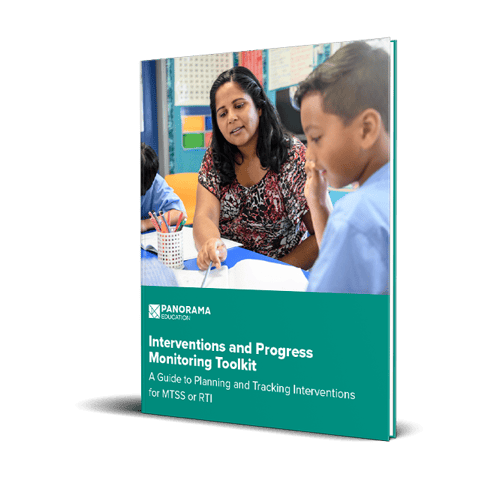If you’re a Texas school district leader, you know you need to enable implementation of Texas House Bill 1416 (previously HB4545). But you may worry about how to ensure staff capacity, adopt efficient tools, and leverage the most effective process.
To address pandemic learning loss, the Texas legislature passed HB 1416, establishing tutoring requirements to catch up public education students who did not meet grade-level expectations on standardized tests.
Meeting the requirements of the bill can feel like a monumental task. But through our experience supporting educators in Texas, we’ve seen that leaning into MTSS (multi-tiered system of supports) helps districts simplify implementing HB 1416 by streamlining documentation. Read on or watch the video below to find out how.
Get Free Templates for Your MTSS Team
House Bill 1416 Requirements for School Districts
Let’s begin by grounding ourselves in the House Bill 1416 basics.
Texas House Bill 1416 was established to accelerate learning for students who did not pass the State of Texas Assessments of Academic Readiness (STAAR) test in grades 3–8 or STAAR (EOC) end-of-course assessments.
HB 1416 mandates 15 to 30 hours of accelerated instruction for these students who have not been assigned to a teacher who is designated a certified master, exemplary, or recognized teacher via the Teacher Incentive Allotment.
Key instruction requirements for HB 1416:
|
Why Embed HB 1416 Accelerated Instruction Into Your MTSS
Meeting all the HB 1416 requirements can feel daunting. To avoid having to create entirely new systems from scratch, lean into your existing MTSS practices.
Through your MTSS you can:
- Efficiently identify, plan for, and track all students meeting state requirements for accelerated instruction
- Accelerate learning so students are prepared to succeed in STAAR testing
- Optimize time spent with students to address both catch-up growth and annual growth
- Make documentation and reporting as efficient as possible for educators
When you align HB 1416 with your MTSS, you also help to ensure you give students the support they need to simultaneously catch up while also staying on track for annual growth.
Questions to ask when implementing HB 1416:
|
Create a Unified Vision for House Bill 1416 and MTSS
How can districts lean on MTSS practices to orchestrate a concerted effort to address catch-up growth and annual growth in unison? Districts should embed HB 1416 into an MTSS in three phases:
- Align data and tools
- Establish practices
- Implement plan
Let’s look at what each of these phases entails.
Align data and tools
If you’re leading HB 1416 implementation, set your district up for success by identifying data sources across academics, attendance, behavior, and positive character traits. Then curate a menu cataloging suggested research-backed intervention strategies by content area and grade level. You will also need a plan to effectively communicate expectations for documenting student supports.
Establish practices
With the data and tools in place to form a solid foundation, move to establishing practices to fulfill HB 1416. Practices will include analyzing data, understanding HB 1416 implementation, and forming Accelerated Learning Committees.
Implement plan
Finally, with supports and practices aligned, your district can implement the plan using centralized tools, monitor progress at regular intervals to track implementation, and make adjustments based on that progress.
Bring HB 1416 to Life in Panorama Student Success
Panorama helps districts leverage the power of MTSS to implement HB 1416. Our Intervention Tracking for MTSS helps educators better serve every student by centralizing data and tools in one unified platform.
In Panorama Student Success, quickly filter from multiple sources to identify students who need support through MTSS or require accelerated instruction education plan for House Bill 1416 based on STAAR results.
Use Panorama Student Success to identify students for HB 1416
Log Tier 1, 2, and 3 intervention plans and indicate which should be associated with HB 1416. By tagging a plan to Accelerated Instruction and the appropriate subject area, you can easily track toward students’ 15 to 30 hours of supplemental instruction for HB 1416.
We’ve seen our Texas partners leaning into MTSS practices to help make implementation more manageable. We hope that you’ve gained a new perspective on aligning data, tools, and processes that build educators’ capacity to focus on what they do best: drive student support and learning.
Download How Panorama Helps Districts Implement HB 1416 [PDF]
More HB 1416 and MTSS Resources
- House Bill 1416 Implementation Overview (Texas Education Agency)
- Texas Tutoring Supports
- High Impact Tutoring Toolkit
- Getting Started With MTSS at San Angelo ISD
- Interventions & Progress Monitoring Toolkit
Let's Discuss How Panorama Can Support Your HB 1416 Implementation






